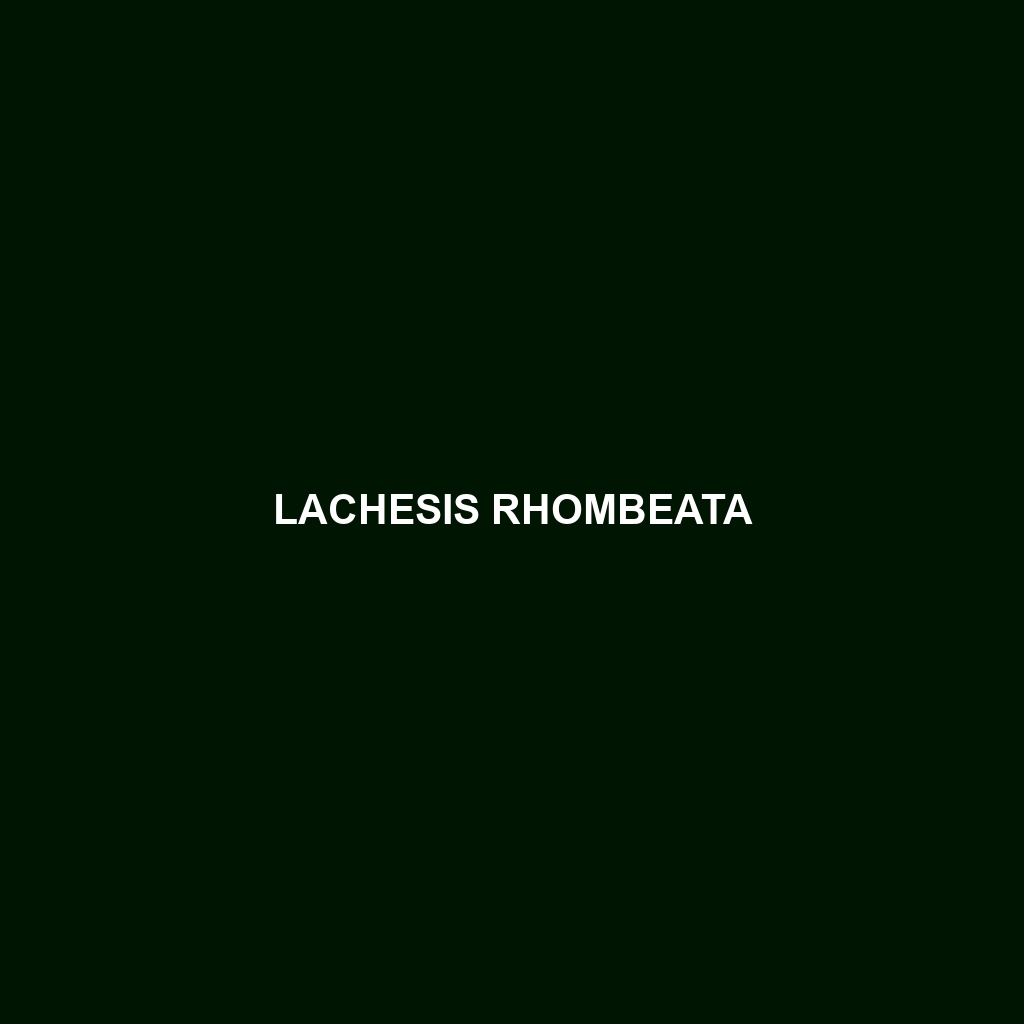Common Name
Lachesis rhombeata
Scientific Name
Lachesis rhombeata
Habitat
Lachesis rhombeata, commonly known as the bushmaster, inhabits a variety of landscapes across Central and South America. This species is primarily found in rainforests and savannas, thriving in humid, tropical climates. They are typically located in areas with dense vegetation that provides shelter and hunting ground. Specific regions include parts of Panama, Colombia, Venezuela, and the Brazilian Amazon. The climate in these areas is characterized by high moisture levels and significant rainfall, creating an ideal environment for the bushmaster. Due to their preference for warmer climates, Lachesis rhombeata is less commonly found in temperate forests, demonstrating a strong affinity for these specific habitats.
Physical Characteristics
This fascinating reptile can reach substantial lengths of up to 3 meters (nearly 10 feet), making it one of the largest venomous snakes in its range. Lachesis rhombeata features a distinctive triangular-shaped head with a distinctive flat shape and a long, slender body. Its coloration is primarily a mix of brown, gray, and olive hues, accented with dark bands or blotches that assist in camouflage among forest debris. The belly is lighter in color, facilitating further camouflage against predators. Unique physical adaptations include its long fangs, which can measure more than 2.5 centimeters in length, allowing the bushmaster to effectively inject venom into its prey.
Behavior
Lachesis rhombeata exhibits both nocturnal and crepuscular behavior, typically being most active during the early morning and late evening. As a solitary snake, it primarily prefers to hunt alone, relying on its acute sense of smell and heat-sensing capabilities, which are enhanced by specialized scales. During the mating season, which tends to occur in late rainy seasons, males can be seen engaging in elaborate courtship rituals, demonstrating their size and strength through displays of aggression. This species is known to adopt a defensive posture when threatened, often coiling up and displaying its venomous fangs.
Diet
Lachesis rhombeata is primarily a carnivore, preying on a variety of small mammals, birds, and reptiles. As an ambush predator, it typically waits patiently for prey to come within striking distance before launching a quick attack. Its diet includes rodents, which form a significant portion of its nutritional intake, and occasionally larger prey such as opossums and small monkeys. The bushmaster’s ability to consume prey larger than its head is facilitated by its highly flexible jaws.
Reproduction
The reproductive cycle of Lachesis rhombeata typically begins during the rainy season. This species is ovoviviparous, meaning females give birth to live young rather than laying eggs. A single litter can consist of anywhere from 10 to 30 offspring, depending on the size and health of the female. After a gestation period of approximately 6 to 8 months, the young snakes are born fully developed and immediately independent. Parental care is minimal, as the mother does not remain with the young once birthed, leaving them to fend for themselves.
Conservation Status
The conservation status of Lachesis rhombeata is currently classified as least concern according to the IUCN Red List. However, the bushmaster faces threats from habitat destruction due to deforestation and land conversion for agriculture, which affects its natural habitat. Conservation efforts are underway, focusing on habitat preservation and awareness programs. In some regions, protective legislation has been established to safeguard critical habitats.
Interesting Facts
One of the most striking features of Lachesis rhombeata is its ability to live in diverse habitats, exhibiting remarkable adaptability. Interestingly, this species is known for its unique behavior of basking in the sun during cooler temperatures, which is somewhat uncommon in other snake species. Additionally, the bushmaster has a powerful reputation in indigenous cultures, sometimes being revered as a creature of myths and legends.
